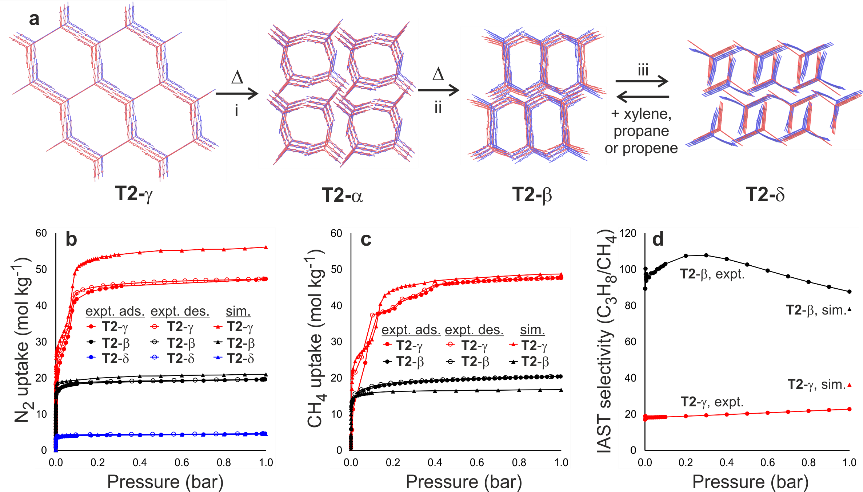Experimental materials design
A generic, linear ‘predict-make-measure’ approach is not feasible, and it is not our goal. The experimental programme will interact dynamically with the computational advances in Theme 1 from the very start of the programme, and many problems will initially be tackled by experiment before leveraging the power of computation.
Our ‘competitive edge’ here is our proven ability to conceive and then to synthesize modular building units, either as molecules (Cooper et al., Nature Mater., 2009) or extended layers (Rosseinsky et al., Science 2013) to encode new function (Cooper et al., Nature Mater., 2014; and Cooper et al., Nature, 2017, Fig.1 ).
Self-assembled structures often have high symmetry: e.g., our porous organic cages which resemble Archimedean or Platonic solids, in strong contrast to asymmetrical biological molecules. We will access less symmetrical modules by building on our strategy of statistical syntheses of mixtures (Cooper et al., Nature Commun., 2011) to produce “scrambled” mixtures asymmetric molecules, with chirality if needed, in a one-step process. These mixtures will be separated into their individual components by automated chromatography to build libraries of 100’s of such modules to serve as asymmetric building blocks. These will then be combined, guided by computational methods, to create more sophisticated function. This synthetic development is crucial for function that is more like biology.
Design of complex functional materials requires prediction to move beyond the modules themselves and to understand how organic or hybrid modules interact to give enzyme-like or photocatalytic functions. Control over electronic structure could access states poised between competing localisation and pairing, and hence realise extreme temperature (1000K Tc) superconductors, which would revolutionise power transmission and medical imaging. Our observation of new states of matter such as the Jahn-Teller metal (Rosseinsky et al., Science Adv. 2015) suggests new coupling scenarios involving multiple molecular contributions at the Fermi level. Here, as for enzyme or photocatalyst design, experiment in isolation leads to a bewildering set of choices: close interaction with computation to develop appropriate filters and design guidelines will transform our ability to target new function.

Figure 1: Encoding new function. Experimental design for the synthesis of a) organic molecules with ranging pore size and structure allows for the encoding of gas selectivity and predicted and calculated via computational design. Experimental vs. predicted gas uptakes b) N2, c) CH4 and d) C3H6/CH4 selectivity.